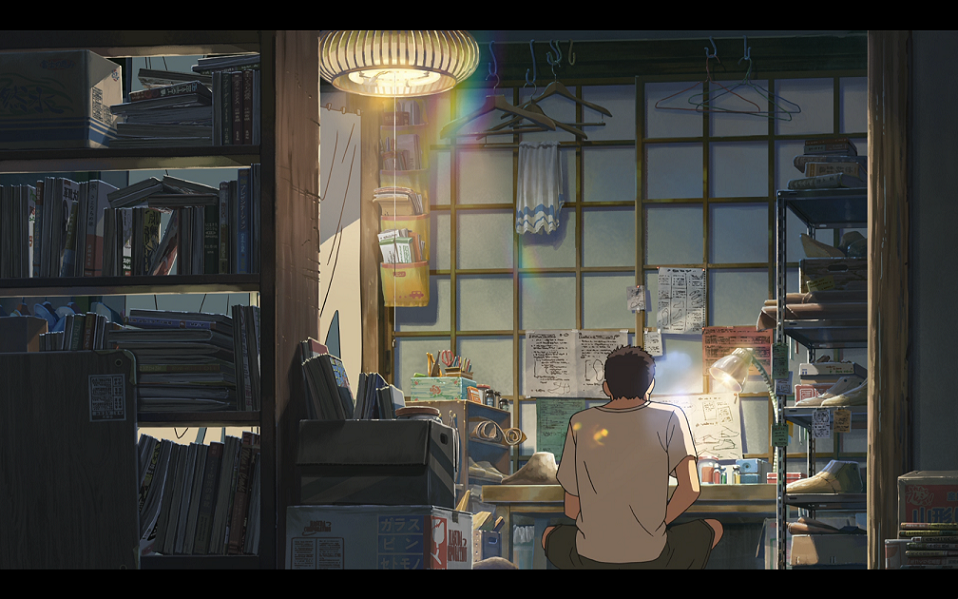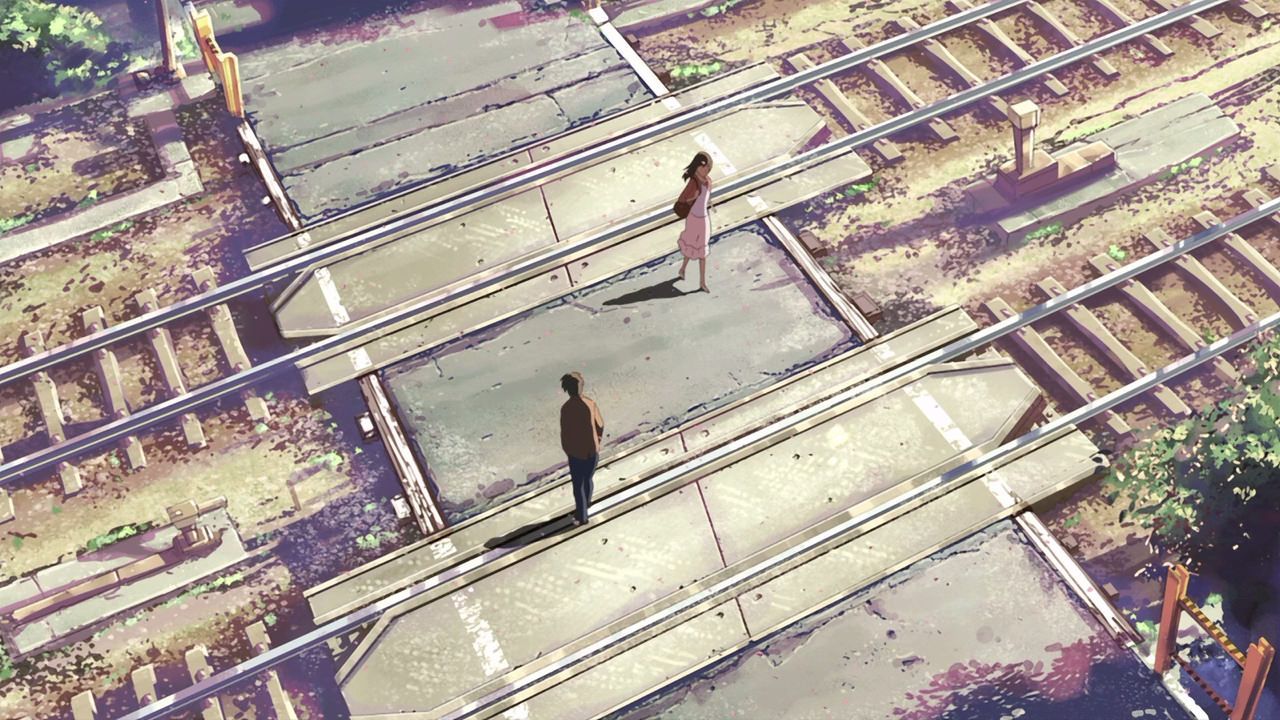This article was written by kaanton and edited by Riles and SendPieSenpai of the MAL Articles Club.
Interested in writing or editing for us? Click here!
With the recent success of Kimi no Na wa., Makoto Shinkai has risen from niche director to household name in Japan (something which he himself doesn’t seem to be too happy about). While the film has been pretty different from his previous films in terms of overall tone and style, it’s clearly a Shinkai production.
Shinkai’s style is pretty distinct, both visually and in how he presents his narratives. His visual style can be best described as a heightened version of reality with unnaturally shiny objects and saturated colours. His lighting usually involves a harsh contrast between areas in shadow and areas with light shining on them. Textures are enhanced with light affecting the same surface differently in different places.

One noticeable aspect of his style is the very prominent blue hue in his backgrounds, often in areas with shadow. The shadows also tend to have a thick outline of lighter shadow areas. Another easily distinguishable feature of his works is his heavy use of lens flares in an attempt to capture how a camera sees light. This visual style was first shown in his 2002 short, Hoshi no Koe, and refined over his other work, though you can see how he uses light and value similarly in his 1999 black and white short, Kanojo to Kanojo no Neko.

His 2011 film, Hoshi wo Ou Kodomo, while still retaining elements of this style, adopts a more Ghibli-like approach to its backgrounds. He uses this approach to capture the feel of the movies made by Hayao Miyazaki from which it draws heavy inspiration, as Shinkai is a big fan of his films.
Another trademark of Shinkai’s style is the use of voice-over narration. Some of his films rely heavily on its usage, such as Byousoku 5 Centimeter and Hoshi no Koe; while others, such as Kimi no Na wa., use it sparsely. Shinkai studied literature in college, and it’s likely that this element of his style has been influenced by his interest in books; in particular, he cites Haruki Murakami as one of his favorite authors. Murakami’s books, like Shinkai’s films, tend to be emotionally driven with a heavy emphasis on mood. Some of his novels are in the magical realism genre, like in Shinkai’s Kimi no Na wa. and Kumo no Mukou, Yakusoku no Basho.

Shinkai’s works tend to touch upon similar themes. His most prominent theme can be referred to as "the unavoidable barriers between individuals," which can either be metaphorical or literal. His films explore the communication issues and feelings of longing that arise from both distance and interpersonal hurdles. His 1999 short, Kanojo to Kanojo no Neko, is narrated from the perspective of a cat who is in love with his owner, but can't express his feelings due to the large metaphorical barriers he faces in communication and species. His next work, Hoshi no Koe, takes this idea even further by using when its main leads are separated by time and space, sending text messages that take years to reach one other. Shinkai has continued to explore this theme in his later works.

Trains, train tracks, and railroad crossings can represent distance and separation, which is why they crop up so often in Shinkai’s films. In his 2007 film, Byousoku 5 Centimeter, it’s even used as a plot point. Takaki, the protagonist, is visiting Akari, his long-distance girlfriend, by train. However, heavy snowfall causes constant delays, keeping them from meeting each other until hours after the intended meeting time. This was probably the most prominent use of trains in his films. Aside from Byousoku 5 Centimeter, they usually stay in the background.

Mono no aware (a term used to describe the awareness of the transience of things) is a theme that pops up frequently in his works which is combined with his other prominent themes to create a wistful atmosphere that permeates in his films. His main characters often look back with fondness at times long gone, contrasting with their present state of loneliness. Through these themes, he explores a melancholic mood that’s present in all of his films to some extent.
Recently in some films such as Kimi no Na wa. and Hoshi wo Ou Kodomo, Shinkai’s themes have taken a backseat to the high concept stories being told. However, they’re still an essential component of those films. In Hoshi wo Ou Kodomo, one of the main driving forces behind the narrative is a man trying to bring his dead wife back to life, having been separated by life and death; while Kimi no Na wa. explores the longing that comes from separation of love due to distance. Through past, present, and future, and from his smallest works to his biggest hits, Shinkai’s root style and themes are always used carefully and effectively to create wonderful stories.

Got feedback? Leave a comment here!




